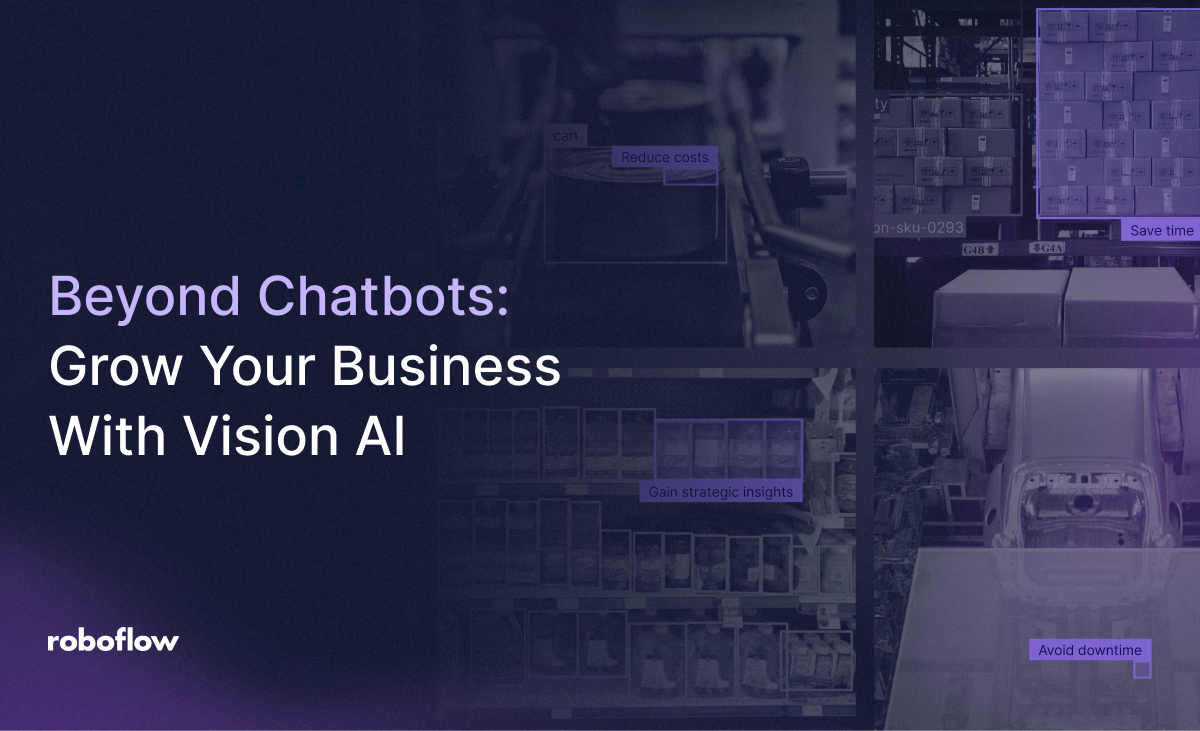
The rise of AI is putting immense pressure on technology teams. The majority of CEOs believe AI will be the most impactful technology in their industry, and organizations that have implemented AI report higher efficiency gains than their peers.
However, the path to success isn’t always obvious. A recent MIT report revealed 95% of generative AI projects fail to deliver a measurable impact. This leaves us with a question to consider: How can technology teams ensure their AI efforts translate into positive, measurable business outcomes?

Our new guide Beyond Chatbots: Growing Your Business with Vision AI is the answer to that question. Drawing on real-world case studies and insights from working with over half the Fortune 500 to implement AI projects, the guide includes proven strategies for your team to succeed. You’ll learn how to identify high-value AI use cases, plan for implementation, and use the technology as a catalyst for growth in your organization.
“Achieving positive results using AI in a lab environment is easy, but the real challenge comes when scaling the solution across a network like ours without disrupting day-to-day operations. Our partnership with Roboflow is allowing us to do just that.” said Asim Ghanchi, AVP of Technology at BNSF Railway.

What’s inside
Technology leaders are embracing AI to grow their businesses, but the road from prototype to production can be difficult to navigate. The guide provides a framework to identify strategic opportunities, design impactful solutions, and deliver a measurable return on investment.
Part 1: Identifying High-Value Use Cases for Vision AI
Success with new technology starts with a clear business objective. The first step is to create a catalog of operations that impact the success of your organization and then pinpoint which ones are the best fit for vision AI. We’ve found that successful projects share a few common attributes:
- Volume and velocity: Does the process occur at a speed or scale that makes it difficult for humans to handle?
- Actionability: Does the visual information lead to a subsequent action or decision?
- Subjectivity and consistency: Is the current process prone to human variability, subjectivity, or error?
- Feasibility and safety: Does the process require visual observations in an environment that is unsafe or inaccessible for humans?
From there, you’ll want to prioritize the high-value opportunities – the quick wins that will build momentum and demonstrate early success. Starting with the higher-value, lower-complexity use cases facilitates faster time to value, improved buy-in, and important skills development.
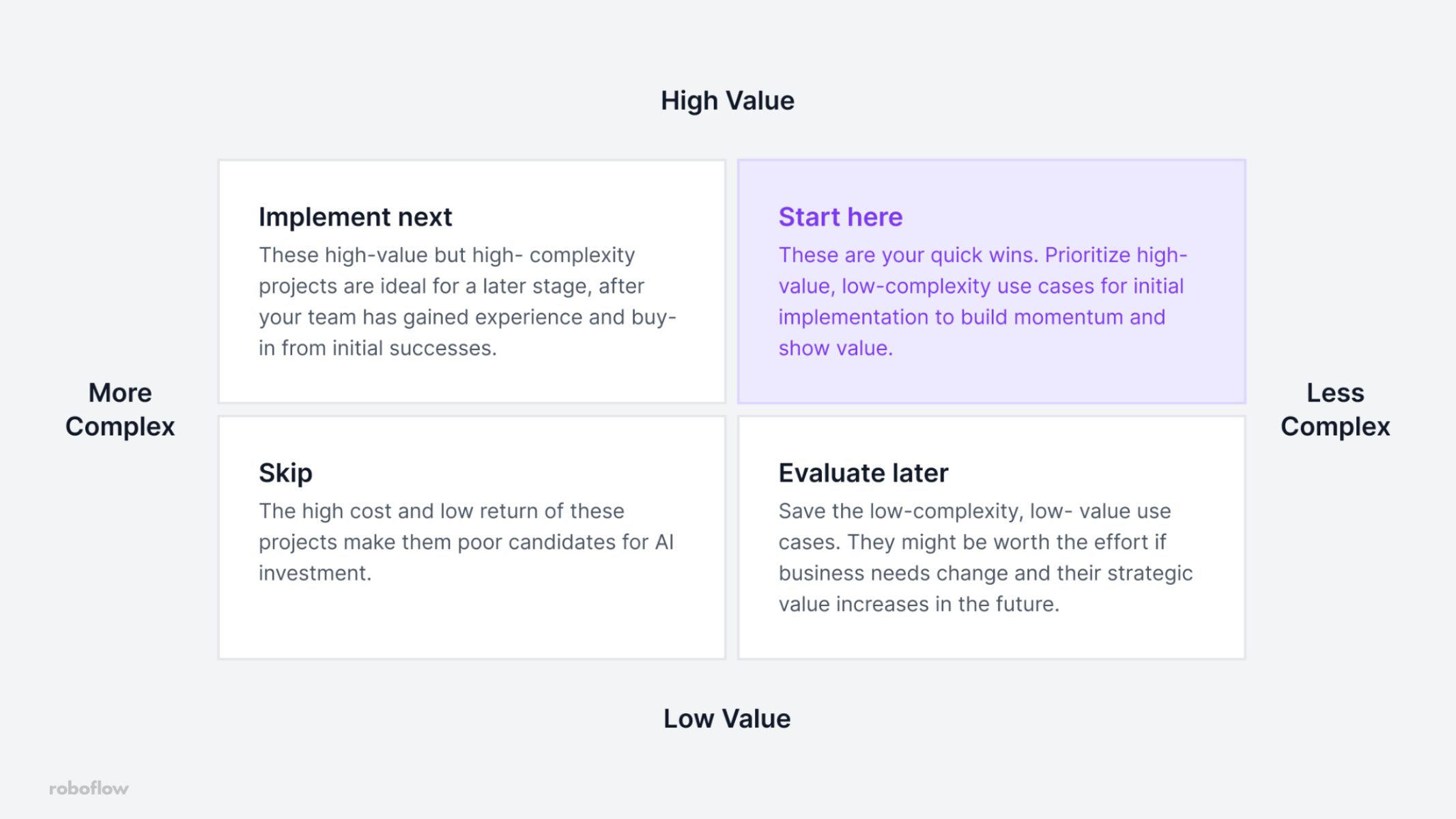
Part 2: Designing Your Vision AI Solution
Once you’ve identified your high-value use cases, the next step is designing the right solution.
The true power of vision AI lies in connecting its insights to existing systems. By using the output from one AI system, you can orchestrate smarter, more dynamic operations. For example, when an AI system detects an anomaly in a manufacturing scenario, it can trigger real-time alerts, reroute items by controlling machinery, and update related databases – all powered by one model.
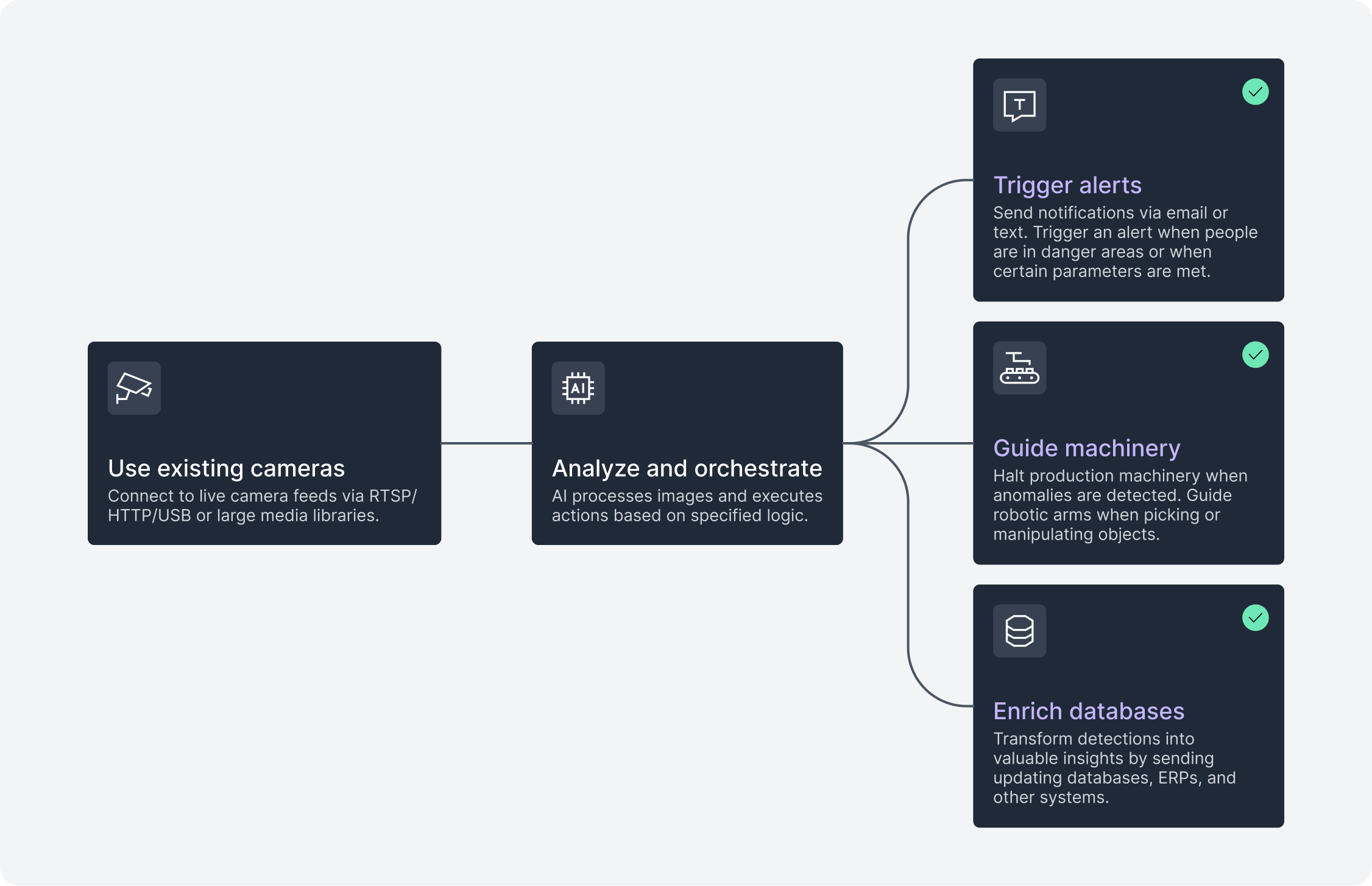
Part 3: Going from Prototype to Production
Finally, you’ll want to understand how a project's success often depends more on people and processes than on the technology itself.
In a recent survey, when technology professionals were asked what makes an AI project successful, many of the top factors they reported focused on project planning and preparation, such as organizing internal training, having a dedicated project lead, and implementing a phased rollout.
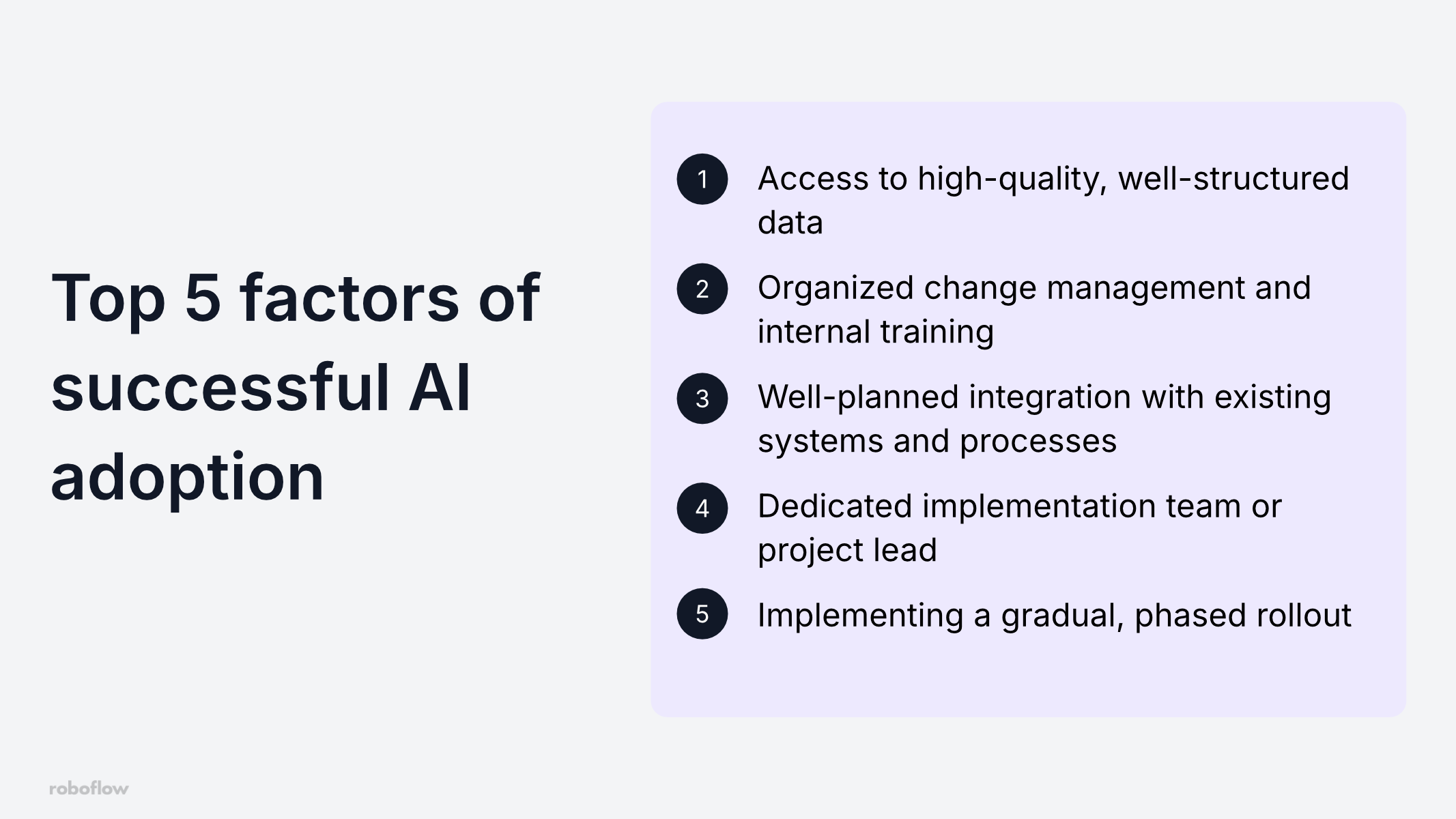
When implementing vision AI, successful teams break the project into manageable stages, with each step designed to gather feedback, avoid surprises that might derail the project, and prove the value of the technology. This continuous feedback and buy-in loop is what transforms a pilot program into a scalable, enterprise-wide solution.
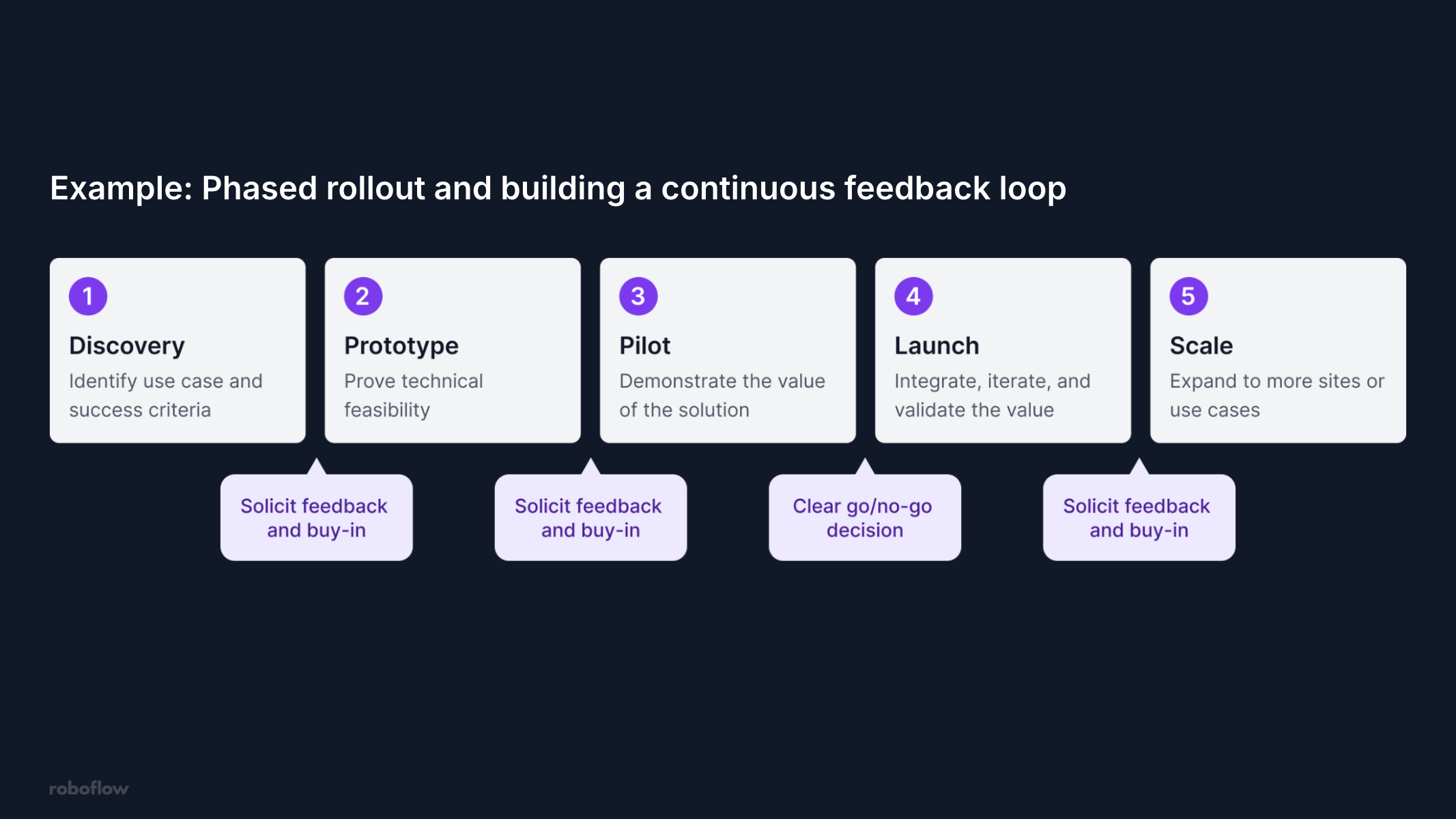
Next steps
The journey from prototype to production can be complex, but you don't have to navigate it alone. According to the above mentioned MIT study, when implementing new AI tools, organizations that partner with specialized vendors are almost twice as likely to see success with the technology.
Remember to check out our guide Beyond Chatbots: Growing Your Business with Vision AI for a complete roadmap to identify and implement high-impact AI use cases. If you already have a challenge in mind, schedule a call with one of our experts and get tailored recommendations.
Cite this Post
Use the following entry to cite this post in your research:
Patrick Deschere. (Aug 25, 2025). Beyond Chatbots: Grow Your Business with Vision AI. Roboflow Blog: https://blog.roboflow.com/vision-ai-guide/
